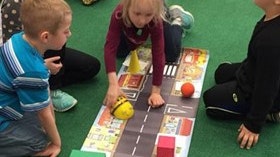Homepage
•
Learning Library
•
Blog
•
No device needed to teach kids to code
Expand breadcrumbs
Expand breadcrumbs
- Learning Library
- Blog
- No device needed to teach kids to code
- Homepage
- •
- Learning Library
- •
- Blog
- •
- No device needed to teach kids to code
No device needed to teach kids to code
By Team ISTE
January 29, 2019








